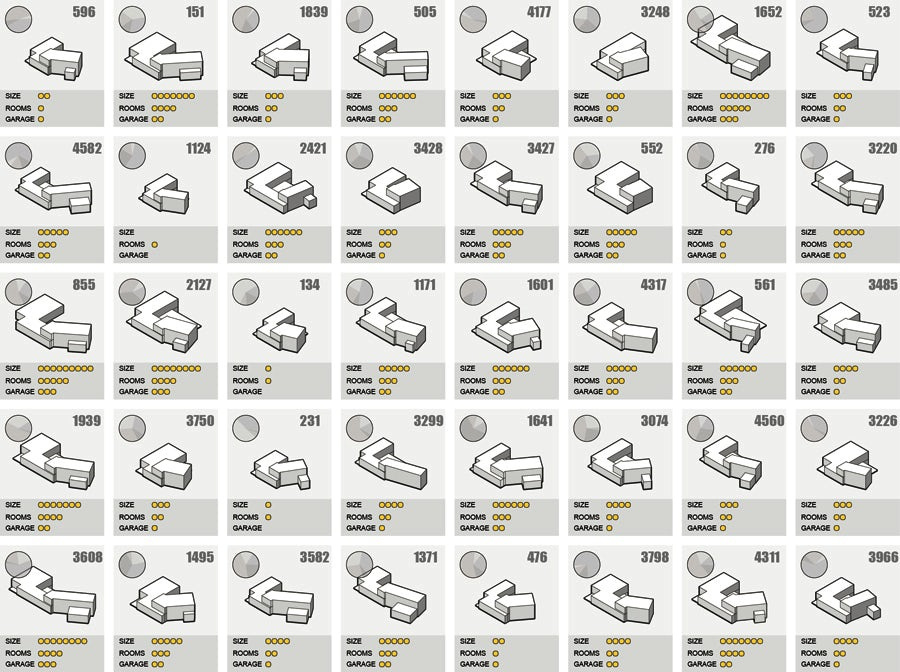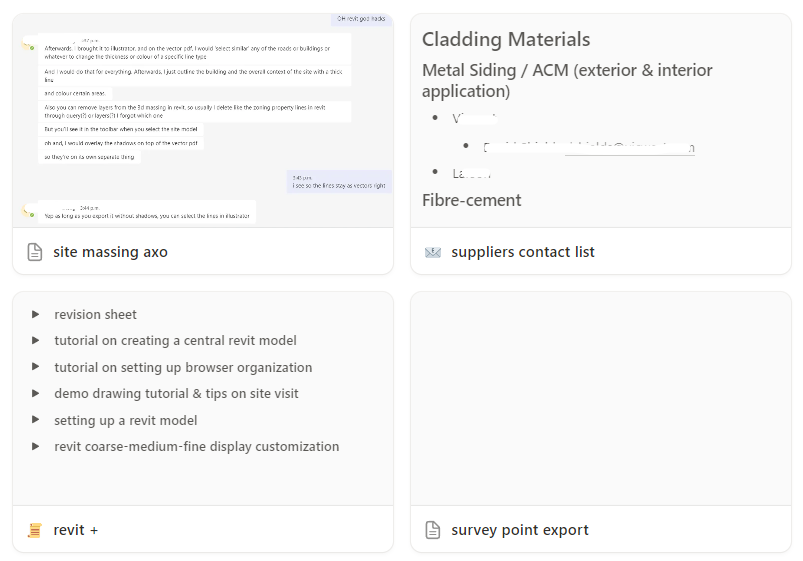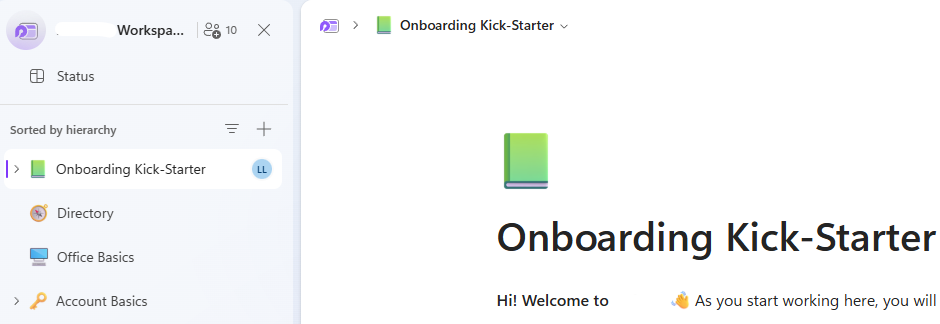Overcoming "low-value struggles" in a junior designer role
And why working at a start-up might be a good idea for expedited growth 📈
Low-value struggles seemed inevitable for me as a junior architectural designer.
LOW-VALUE STRUGGLES are time-consuming activities that create the illusion of productivity without (significantly) contributing to growth.
Essentially, they are the “minimum wage tasks” that most designers can do.
Some context
For a typical large-scale project/product launch, 100+ design iterations are not uncommon.
With every coordination and client meeting, the design needed tweaks and updates if not complete redesigns. As a junior designer, implementing these changes and aligning with establish goals are then my job.
I’d…
Redo design iterations from scratch based on client feedback
Completely re-model components later on due to lack of clarity in the beginning
Search endlessly for files on the office’s digital server or asking and waiting
The problem wasn’t that these tasks weren’t necessary — many were. But I was pouring all my energy into work that neither leveraged my strengths nor pushed me to learn, and I began feeling burnt out by the end of each week.
Clearly, something’s gotta be done.
Frustration as motivation
My frustration was the leading motivation to do something about this burn-out trap. After the 20th time of “OMG how did I just spend 2 hours re-modelling/re-rendering/re-editing this again”.
I was simply tired of wasting my time on redoing things from scratch or having to Google the same tutorial every 6 months. So I thought to myself: there MUST be ways to make this easier.
And there was. It was a messy but good-enough Notion page.
I’d type out:
Collection of useful resources online
Commonly used workflows I learned from co-workers
Never-again mistakes that I’ve made
Client management insights from my managers’ stories
Although it was a tiny effort and the results weren’t too big, it was good-enough to get myself started.
As months passed, the database grew.
I happily used them on a daily basis which saved me time here and there, but the real turning point came about after I overheard that my manager is squeezing time out to onboard the new employees - I thought, this is my chance to leverage my skills and efforts, and translate this into something lasting and essential to the firm!
The small firm advantage
Working at a 12-person firm came with challenges: limited resources, everyone wearing multiple hats, and sometimes chaotic workflows. But it also offered my the perfect opportunity: systemizing onboarding and workflows!
With this in mind, I treated this as if I’m designing a Product.
I began by doing research: conducting informal “interviews” with collegues, discussing their feedback on the existing guidelines that I’ve written, and digging out their real pain points by asking them to lead me through their workflows.

Even by chatting with them during morning or lunch hours, I gained valuable insights on their work habits, existing resources in the office, on-going projects, and identified missing opportunities I could leverage.
With these research ready at hand, I scheduled a 15-minute meeting with our principal architect. Nervous but determined, I pitched a simple idea: let me create an office design (and workflow) doc.
“I’m all for new ideas. But what would that require?” he was supportive but cautious.
“Two days of my time, interviews with five team members, and the opportunity to test it with our upcoming hires,” I replied. “I believe it will be a meaningful side project.”
Looking somewhat surprised at my specificity, he agreed, though I could tell he didn’t expect too much from this. I’d understand - it was a side-project proposed by a junior designer - but thankfully, this changed quickly.
Documenting growth
I threw myself into this project with an energy I hadn't felt in weeks. This wasn't about impressing anyone or looking busy—it was about creating something genuinely useful and impactful long-term.
Over two days, I:
Interviewed staff about what they wished new hires understood faster
Documented our informal workflows and made them explicit
Created visual guides to our file structures and naming conventions
Compiled a glossary of firm-specific terminology
Developed a resource map showing where to find different types of information
The process revealed something crucial: the knowledge that made our firm function wasn't written down anywhere. It existed in the minds of people who'd been there for years—inaccessible to newcomers and junior designers unless someone took the initiative to extract and organize it.
The results
The week after, I did a demo of the finished onboarding guide to my principal.
“This is brilliant,” he said. “This is a great way to exercise quality control in a measurable way. Thank you for doing this.”
The quantitative impact of this document is still being quantified as it slowly circulates through the office. However, this document will certainly serve as a foundation for the firm’s standardization as it scales up in the next few years.
Agency & Self-reflection
During the process of intiating this idea of a office-wide document from ideation, research/interviewing, choosing a suitable platform, to finally typing out the skeleton of the document - it was a process of finding agency through self-reflection. And, subsequently, action. It’s a process of realizing:
🧠 Busy ≠ valuable. The onboarding document took just two days but created more impact than months of busy work.
💪 Realizing where my strenghs lie. What I thought was a “normal” skill proved to be a strategic contribution when applied to the right problem.
📈 Agency expedites growth. Instead of just completing tasks, I began seeing opportunities to improve how we work.
🎯 Failure is okay. Although I wasn’t sure if anyone would be open to the idea, I shoot my shot and it landed.
Most importantly, I broke my addiction to low-value struggles.
I still redline drawings. I still update fixture schedules. But these tasks no longer define my professional identity or consume all my creative energy. Instead, they're just part of a broader role I've helped shape — one where my unique strengths create actual, lasting value.
A letter to myself 6 months ago:
As a junior designer, if you're trapped in low-value work, here's what I learned: Apply Product Design thinking to your work (even if you’re not a Product Designer).
1. Audit your current work
For one week, track how you spend your time in hourly increments, then categorize each activity as either “high-value” or “low-value” based on its impact on projects and your professional development.
2. Identify your underutilized strengths
Make a list of skills you have that aren't being fully utilized in your current role. Include non-technical skills like organization, communication, or synthesis.
3. Look for system-level gaps
Note processes that seem inefficient or knowledge that exists only in people's heads. They are the perfect opportunities for high-value contributions.
4. Create a concrete proposal
Before pitching any idea to a higher-up, outline specifically what you would deliver, what resources you need, and what benefit the firm would receive.
5. Start small but think big (scalable)
Begin with a focused initiative that can be completed in days rather than weeks, but frame it as part of a larger vision for improvement, such as a continuously growing document.
Use agency to get rid of the “low-value struggle addiction”
The most valuable insight from this story is the awareness to take initiative.
In small companies and start-ups, there is no “climbing the corperate ladder”. Growth happens when you identify problems no one is solving and offer solutions no one has considered. Like product design. Even if you’re not a Product Designer, audit your day-to-day tasks with the mindset of a PD, take agency, and results will follow.






